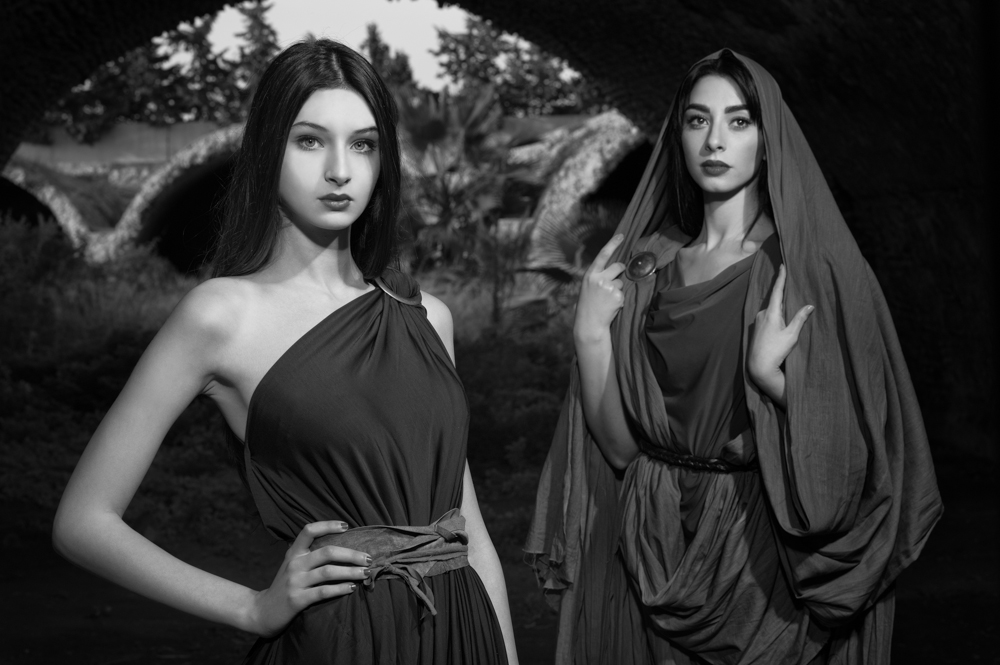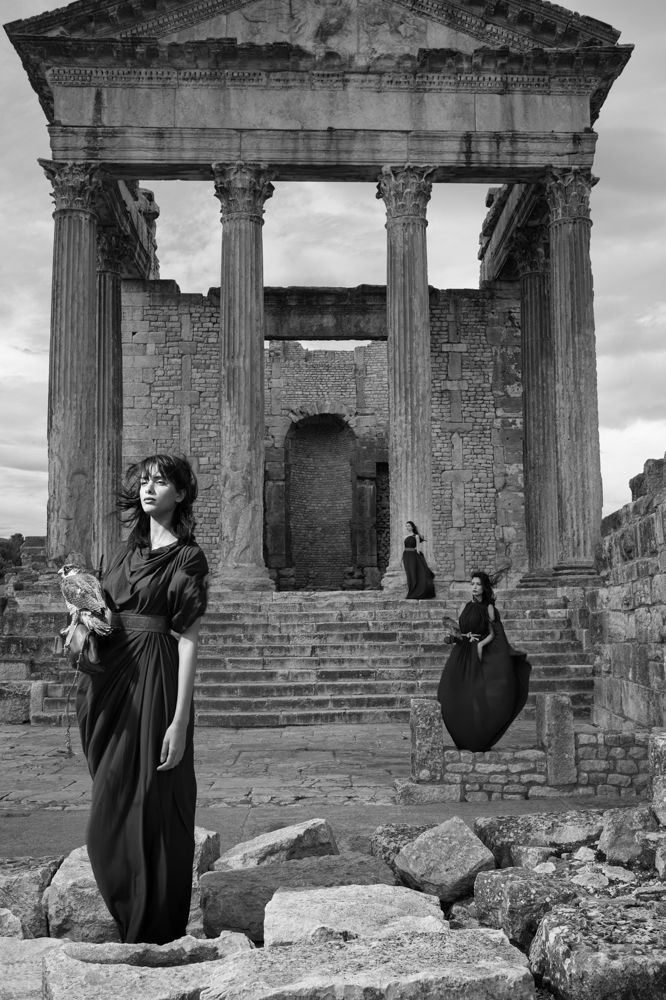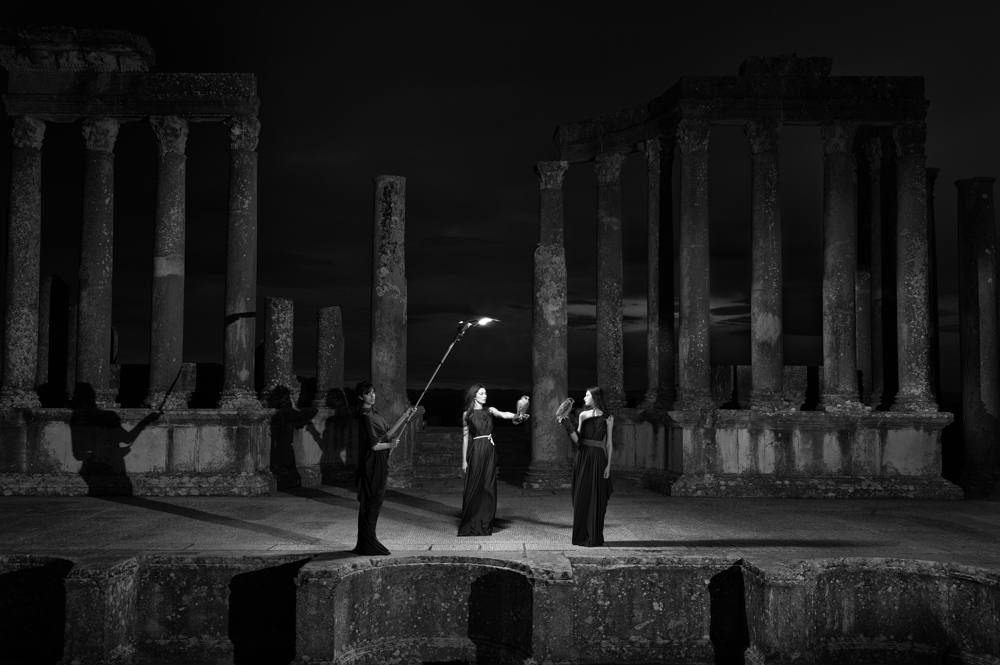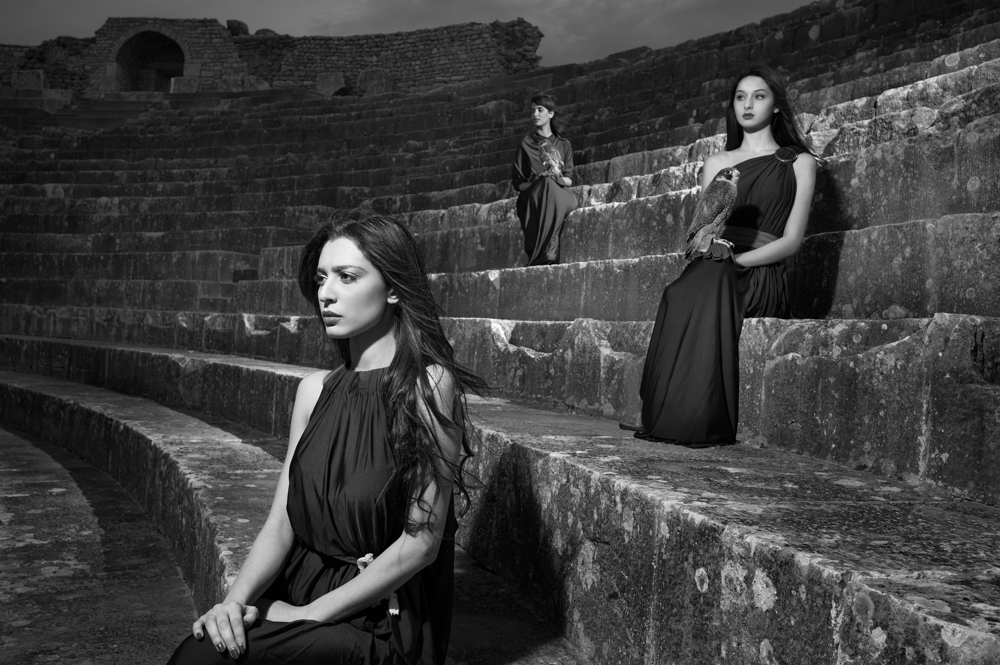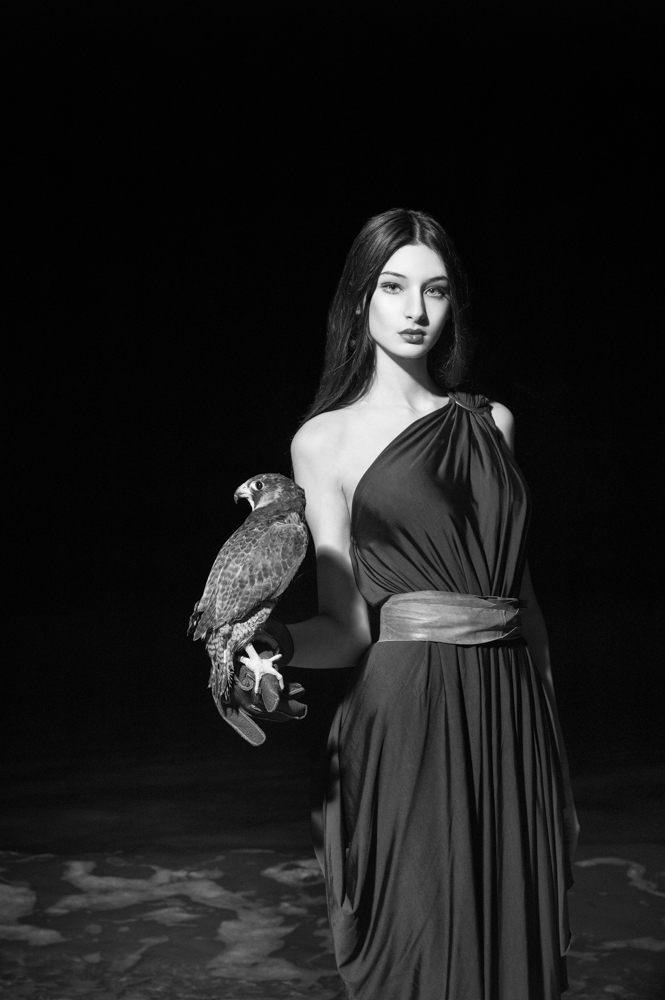Africanae
The series Africanae, sets four young the women in the mirror of their history: the Roman cisterns of Carthage and the Roman town of Dougga. Before the Arab conquest in the 7th century, today’s Tunisia was part of the Roman province of Africa for more than half a millennium – integral to culture and commerce, producing leading administrators, writers, jurists and emperors. Carthage, with a population of 500,000, was the third city of the empire, behind only Rome and Alexandria. Thanks to Rome’s cultural syncretism, non-racial worldview and increasingly open door to citizenship, Africa became a model for a multicultural, multilingual Roman society. Yet, even for secular, pro-Western, Tunisians, identification with Rome does not come easy: As a reaction to European colonialists, who appropriated Tunisia’s Roman past to bolster their own sense of supremacy, Tunisian nationalists tended to identify with the Punic past. An appealing anti-colonial narrative – but a dead end, as little of Punic culture is extant. At a time when the future of secularism in Tunisia's is in the balance, Africanae shows Tunisians as full-fledged heirs of Roman civilization – and Tunisian women as sisters to women in the European parts of the empire. The question for secularist Tunisians today is not whether they should incorporate their Roman into their national identity – but whether they would be willing to stomach the consequences of not doing so.
Marc Erwin Babej is a fine art and documentary photographer who works exclusively in black-and-white. Born in Frankfurt, Germany, in 1970, he received a B.A. in history from Brown University and an M.Sc. from Columbia University Graduate School of Journalism. Marc’s background in social sciences, marketing strategy, media and entertainment pervades his photographic work. Uneasy coexistences are a predominant theme: his images surface inner conflicts and, in so doing, expose seemingly contradictory beliefs. Conflict is a key means of representation – a stance that embraces the viewer with one arm, while holding him at a distance with the other. Marc’s image-making method calls for intensive collaboration with cast members. Members of his still-image film ensemble Mercury Theatre, feature in a variety of roles across the work. Marc’s work is published regularly – both in general media and in international art publications. He also writes a column about luminaries in art and documentary photography for Der Spiegel and American Photo.
